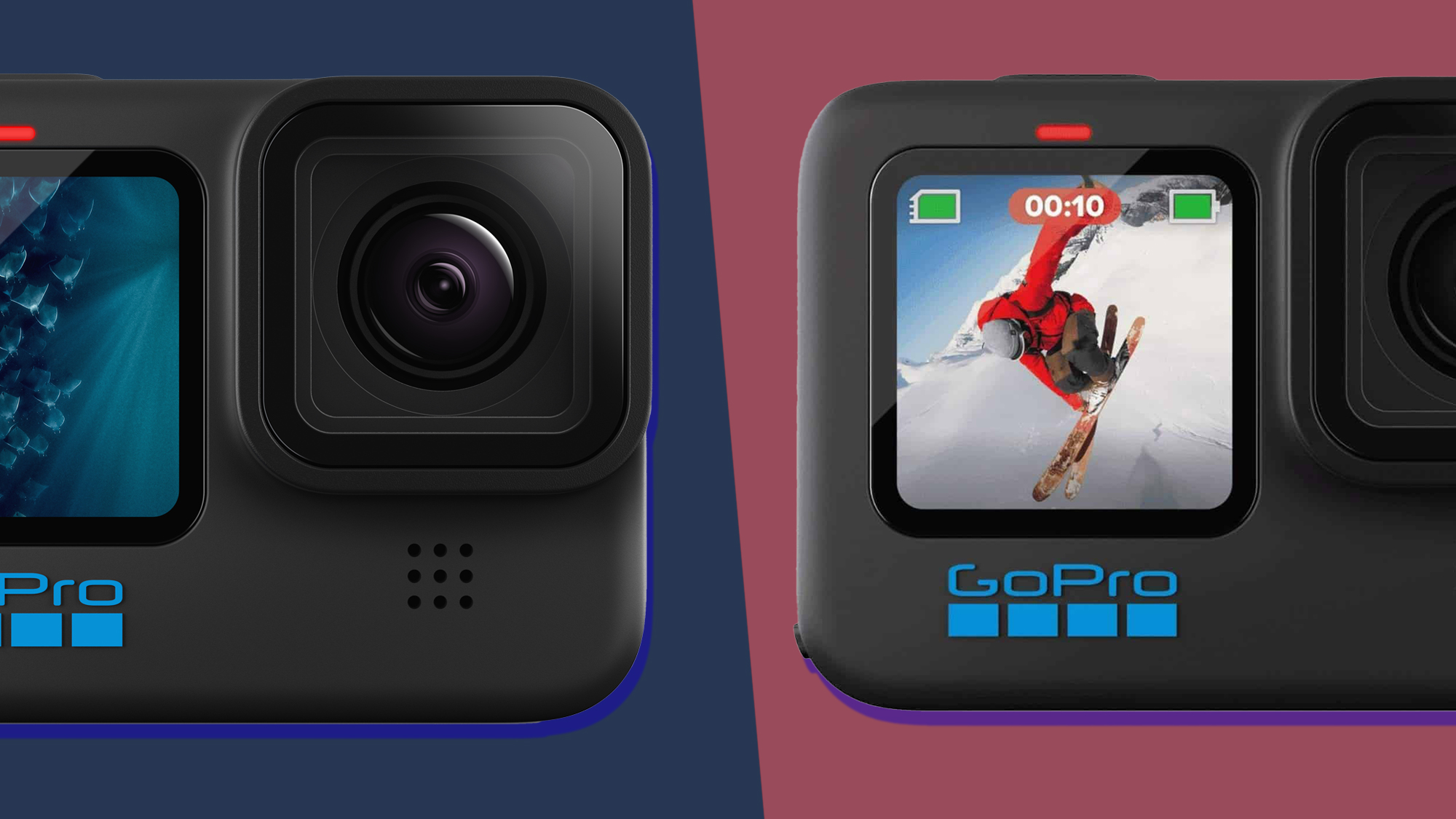
Like Apple with its iPhones, annual GoPro camera launches are about as certain as new seasons of Stranger Things. And sure enough, the technology-cum-lifestyle brand has officially lifted the lid on the latest addition to its flagship Hero series: the GoPro Hero 11 Black.
Billed as GoPro’s most capable action camera yet, the Hero 11 Black combines impressive versatility with powerful performance to give users – beginner or otherwise – the tools to capture all manner of outdoor adventures in movie-style quality. You can read all about it in our hands-on GoPro Hero 11 Black review.
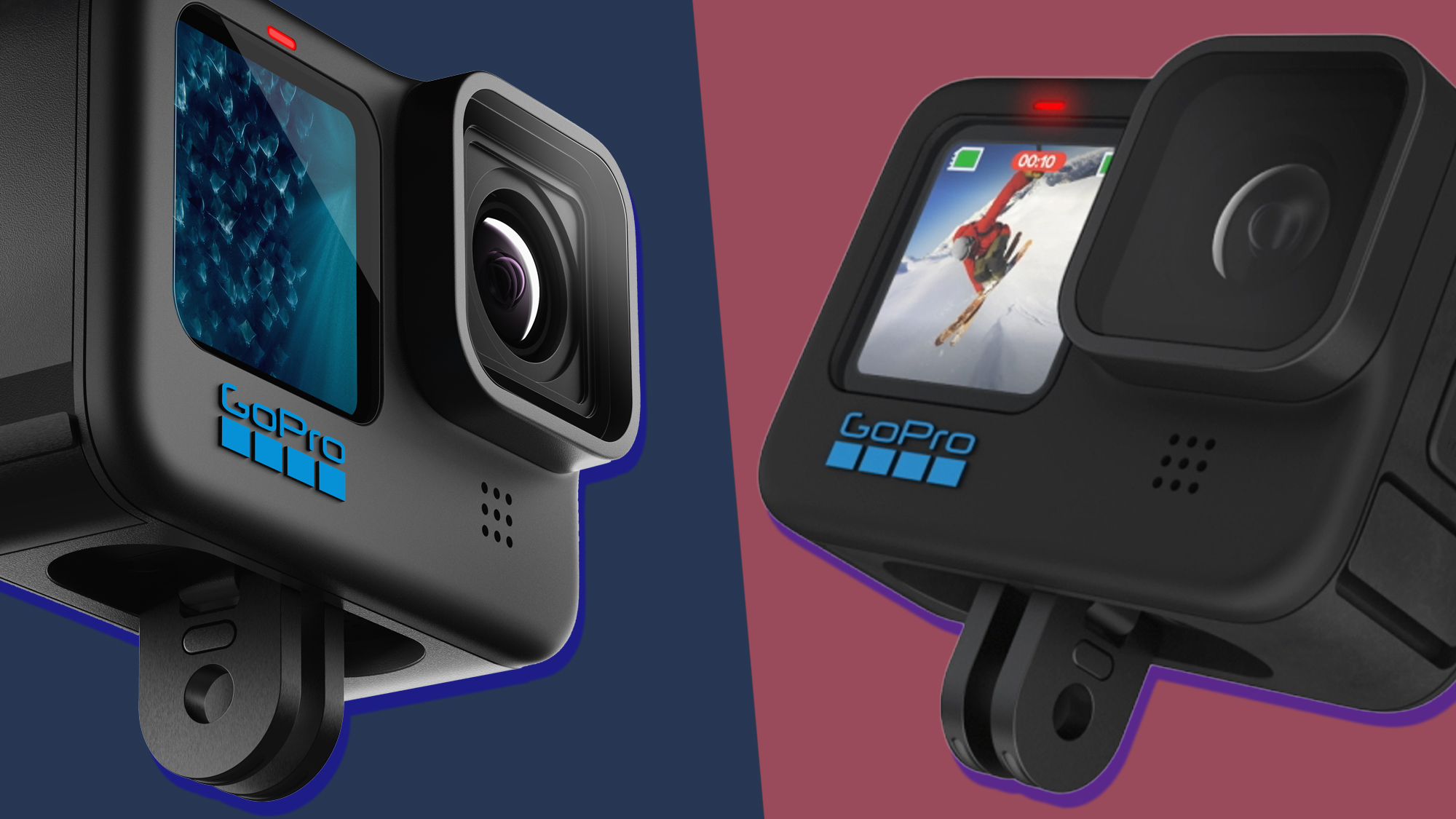
But just how different is GoPro’s latest action cam to its predecessor, the GoPro Hero 10 Black? The latter remains an exceptional piece of kit in its own right, so upgrading to the Hero 11 Black won’t necessarily be a no-brainer for everyone.
To help you decide whether or not to make the jump, we’ve narrowed down nine of the key differences between the GoPro Hero 11 Black and Hero 10 Black – from their respective prices to stabilization capabilities.
Before we dig into that, though, it's worth noting what's stayed the same between the two action cams – and that list includes the two cameras' design, max resolutions (5K/60p or 4K/120p slo-mo), microphones, connectivity, 10m waterproofing, GP2 processor and displays.
The fundamentals, then, are very similar, but here's where the Hero 11 Black differs from its predecessor...
1. A price to pay
Unsurprisingly, the GoPro Hero 11 Black is more expensive than the Hero 10 Black – but not by a huge margin.
The former is available to buy right now for $399.98 / £399.98 / AU$649.95 if bundled with a GoPro Subscription, or for $499.99 / £499.99 / AU$799.95 with no GoPro Subscription. Here's how that compares to the Hero 10 Black and other current GoPro cameras.
| Model | Price (with GoPro Subscription) | Price (without GoPro Subscription) |
| GoPro Hero 11 Black | $399.98 / £399.98 / AU$649.95 | $499.99 / £499.99 / AU$799.95 |
| GoPro Hero 11 Black Creator Edition | $579.98 / £579.98 / AU$929.95 | $699.99 / £699.99 / AU$1,099.95 |
| GoPro Hero 11 Black Mini | $299.98 / £299 | $399.99 / £399.99 / AU$649.95 |
| GoPro Hero 10 Black | $349.98 / £349.98 / AU$549.95 | $449.99 / £449.99 / AU$699.95 |
As you can see, the Hero 10 Black is available for the cheaper subscription price of $349.98 / £349.98 / AU$549.95 – having been discounted following its successor’s launch – and it’s also now slightly less expensive if bought on its own, too (at $449.99 / £449.99 / AU$699.95).
2. Bigger means better
The biggest practical difference between the GoPro Hero 11 Black and its predecessor is sensor size. The Hero 10 Black sports a capable 1/2.3-inch sensor, but the Hero 11 Black bumps these dimensions up to a versatility-improving 1/1.9 inches.
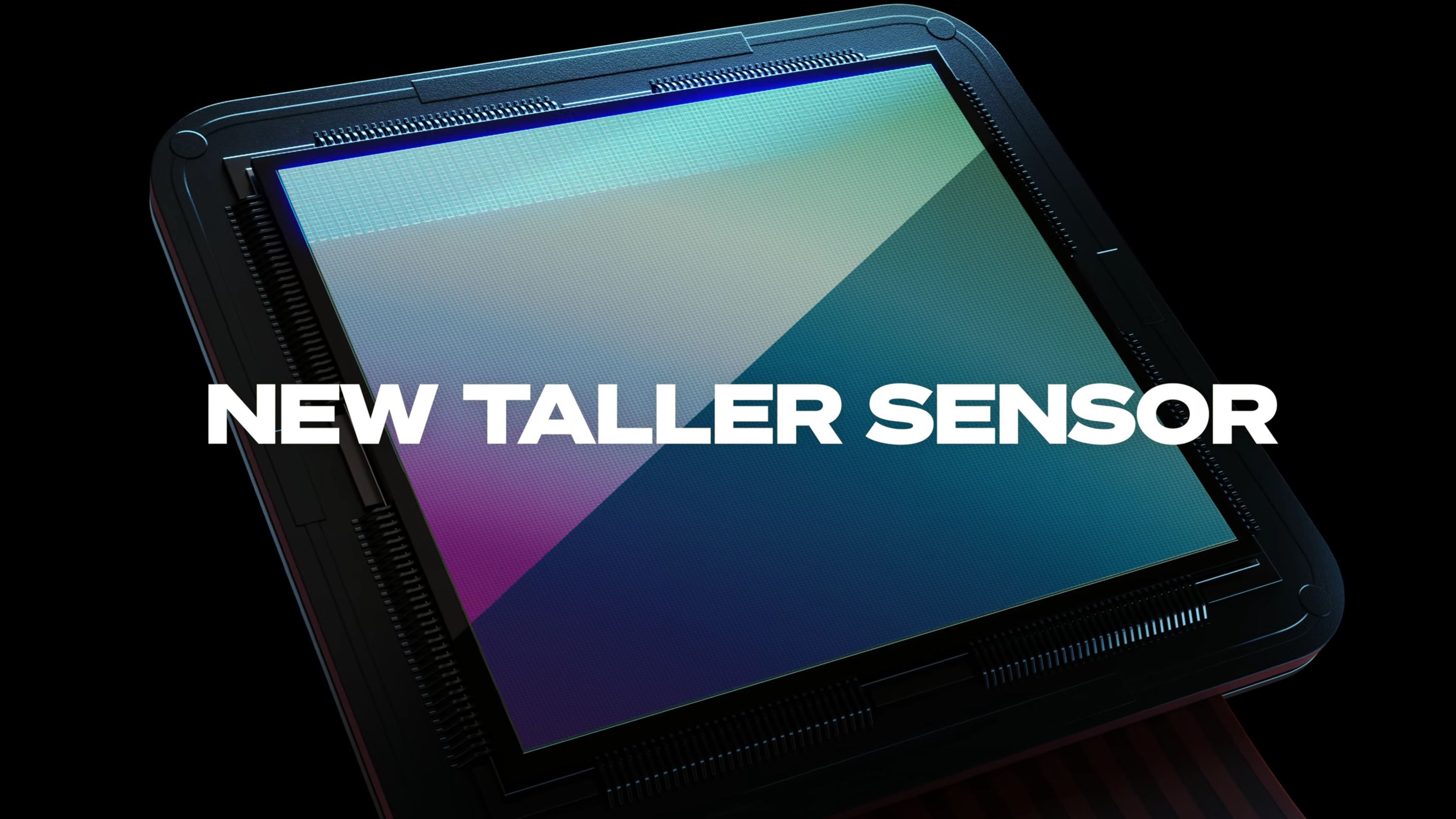
This larger sensor brings with it the option of shooting in 8:7 aspect ratio (on top of the 16:9 and 4:3 in-camera aspect ratios already offered by the Hero 10 Black), which gives you the flexibility to export your footage into any number of formats – a particular benefit for social media creators looking to capture vertically-minded content in 9:16.
But the Hero 11 Black’s 8:7 aspect ratio also offers an enticing shooting option, period. You’ll get a 16% vertical field of view increase over the Hero 10 Black with this 'full-frame' setting, making GoPro’s latest action cam its most immersive snapper yet.
3. Say hello to HyperView
Speaking of immersion, the GoPro Hero 11 Black takes its predecessor’s already impressive SuperView digital lens technology to the next level with HyperView (which was presumably named using the only logical superlative left available to GoPro’s branding team).
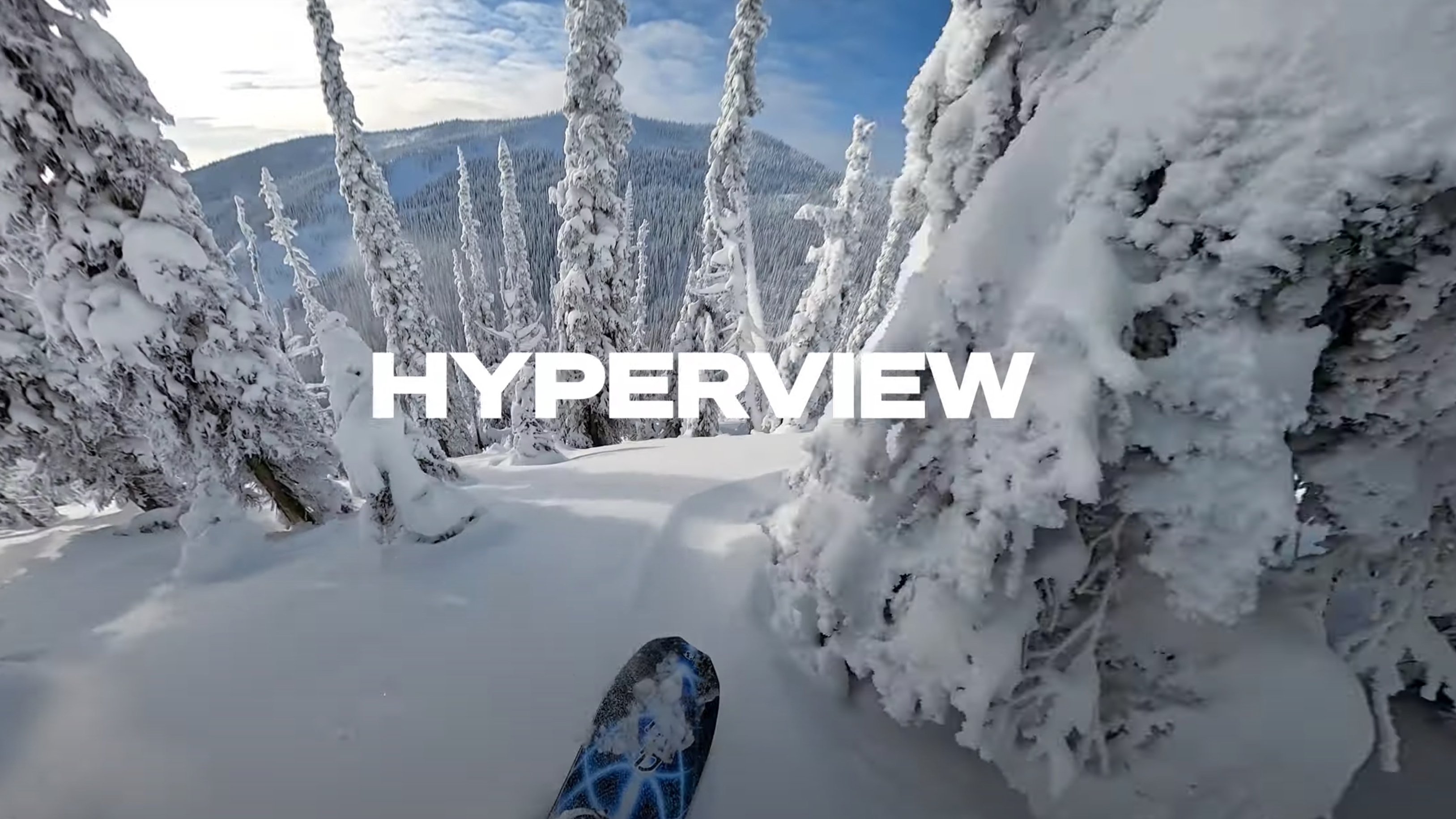
As the name suggests, HyperView lets you capture even more of your surroundings by taking that aforementioned 8:7 aspect ratio and compressing it into a wide-angle 16:9 shot. Basically, this is the best possible lens to use for action-heavy POV footage – and in our experience during testing, HyperView footage was indeed the most immersive of the lot.
That being said, we think SuperView still captures enough of the action for most users, so we wouldn’t describe HyperView as a game-changing upgrade for GoPro casuals
4. Even smoother sailing
Sticking with the Hyper theme, HyperSmooth 4.0 becomes HyperSmooth 5.0 with the Hero 11 Black, continuing GoPro’s commitment to class-leading stabilization.
Where the Hero 10 Black offers two HyperSmooth settings – Standard, High and Boost – the Hero 11 Black does away with the middle option in favor of AutoBoost, a dynamic setting that only applies GoPro’s HyperSmooth stabilization when the camera detects shaking (in a bid to maintain the widest field of view possible during recording).
It works well, particularly during rough activities like mountain biking, and AutoBoost is a smart option for those unsure when to enable the HyperSmooth feature.
5. 360-degree horizon
HyperSmooth 5.0 also adds a new Horizon Lock option for the Hero 11 Black’s Linear lens – and this is definitely one of the more impressive features to arrive with GoPro’s latest action cam.
The Hero 10 Black already uses Horizon Leveling technology to correct footage that's been skewed by up to 45 degrees, but the Hero 11 Black takes this feature – which was previously only possible with the Max Lens Mod on its predecessor – one step further by keeping footage straight (‘locking’ it in place) even when the camera rotates a full 360 degrees. It works with all resolutions and frame rates except for 5.3K/60p, 4K/120p and a handful of others (which stick by standard Horizon Leveling).
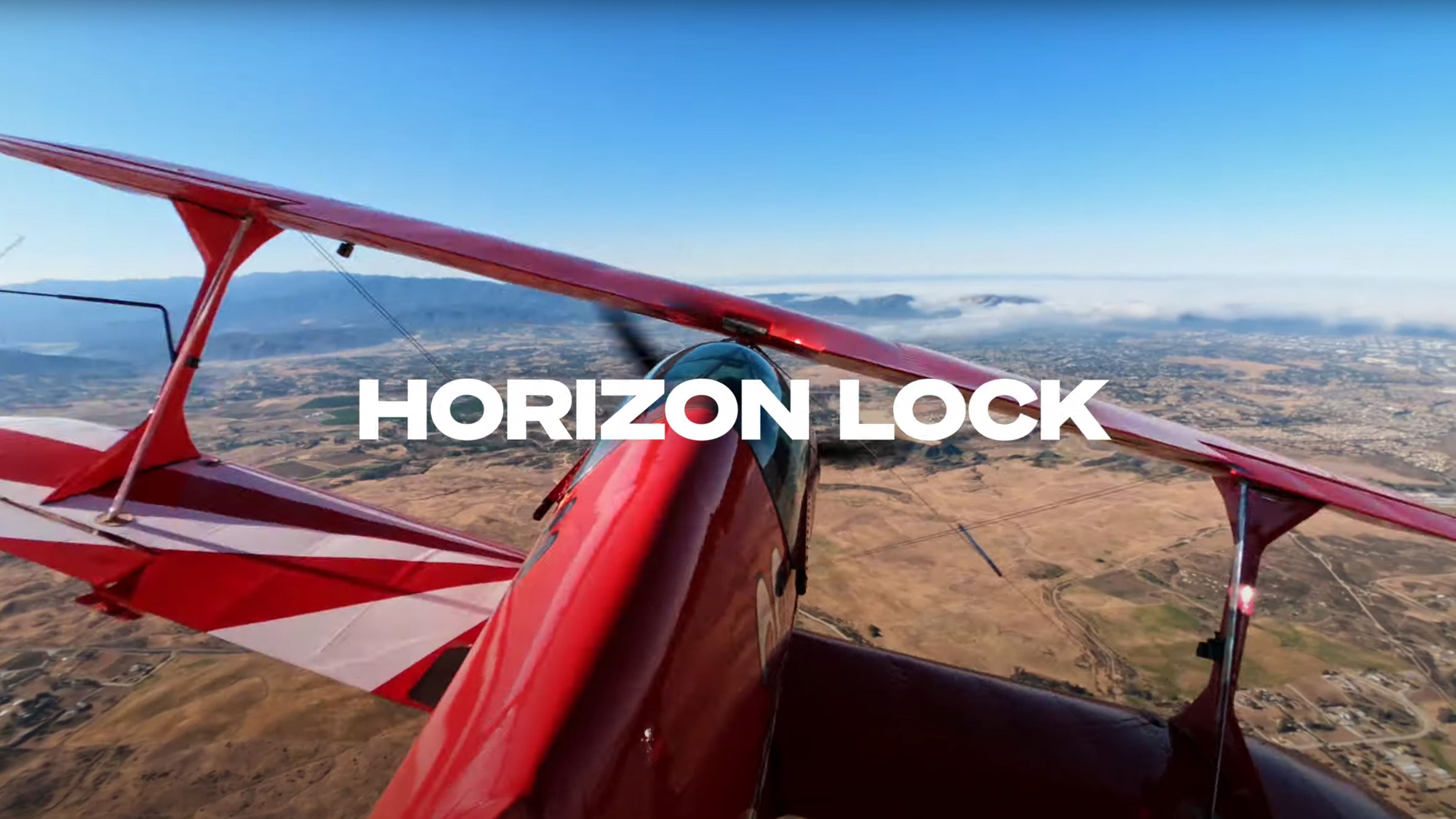
In practice, Horizon Lock makes shooting particularly bumpy activities – jet skiing and so on – a breeze, and adds a real cinematic look to movement-heavy footage. Heck, you can even toss the Hero 11 Black into an aerial spin, and it’ll remain almost completely level despite its numerous turns. Magic.
6. Keeping it colorful
This distinction is more important for experienced color graders than it is for everyday GoPro users, but it’s definitely worth flagging as a key improvement for the Hero 11 Black over its predecessor.
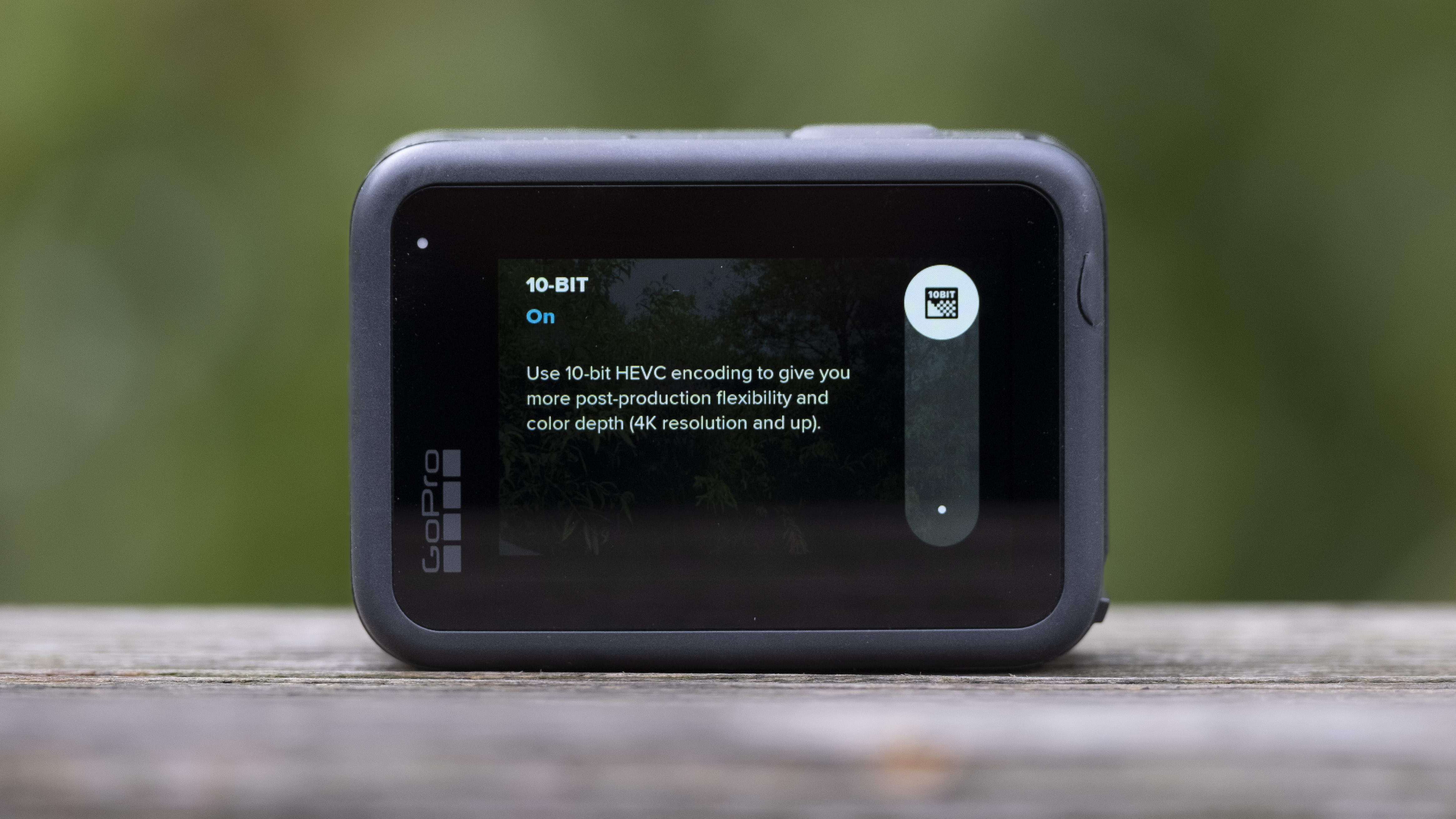
The former now boasts 10-bit color video, which provides 1 billion shades of red, blue and green (versus the 16.7 million offered by 8-bit) to help footage appear more life-like.
Sure, the human eye can only recognize about 10 million colors, but the Hero 11 Black’s superior shade count will eradicate banding in color-changing skies and improve the degree of detail in motion-heavy footage – a major benefit for serious video editors.
7. Make light work
For those of you with a great deal of patience, the Hero 11 Black adds three timelapse presets that aren’t available on the Hero 10 Black.
The first is Light Painting, which employs a long exposure in a dark environment to create brush stroke effects with moving light. We played around with this feature during testing, and although it can be tricky to master, the results were so unique that even botched attempts could be passed off as deliberately artistic. The same goes for Vehicle Light trails, which uses the same technique to capture trailing light from (you guessed it!) moving vehicles.
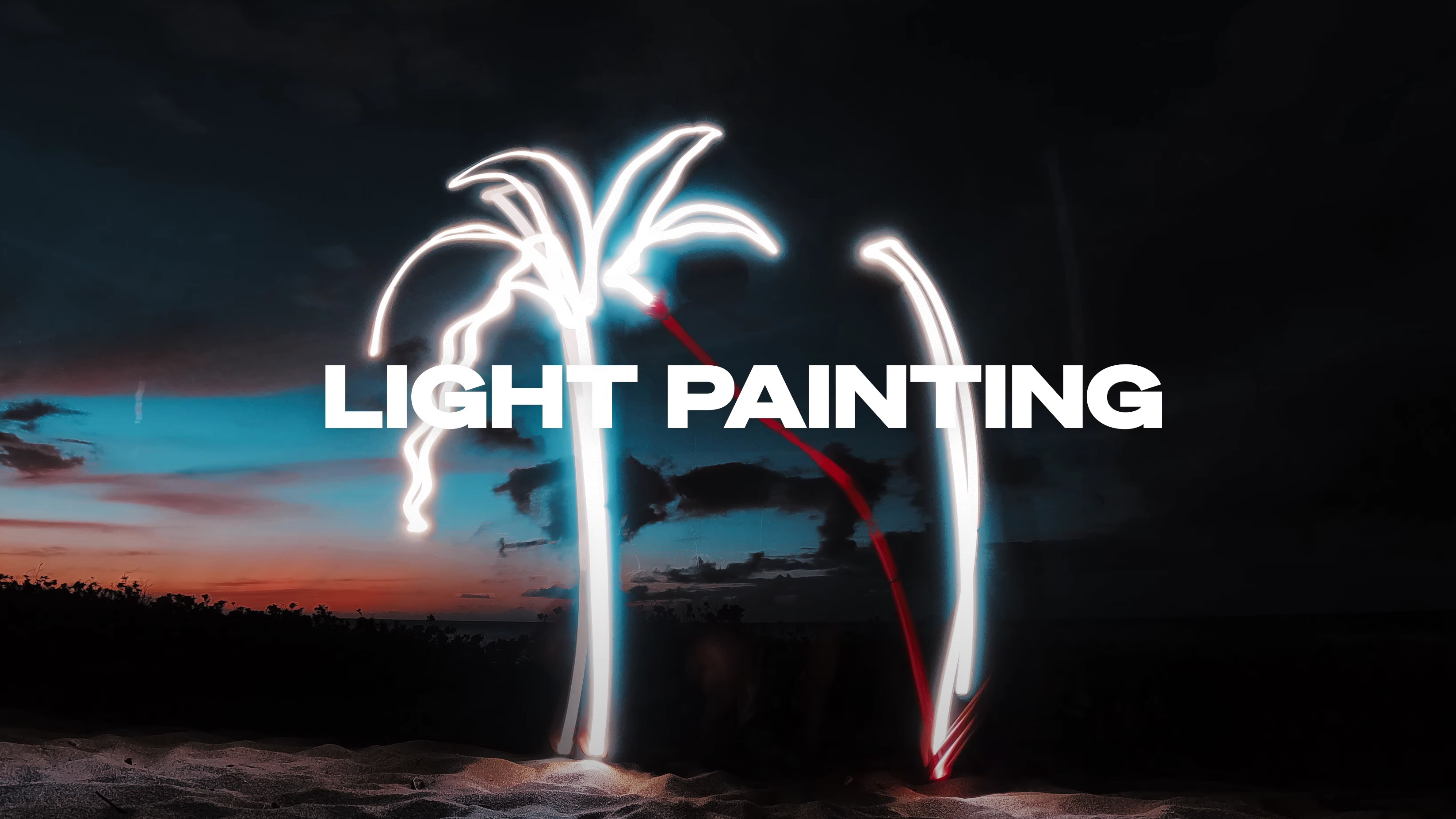
The third new preset is Star Trails, which makes use of the earth’s rotation to create star trails across the night sky. Naturally, you’ll only be able to use this feature in certain conditions, but it’s a nice option to have if you’re camping out in the wilderness.
8. Superior stamina
A crucial feature for all GoPro users, irrespective of skill level, is battery life, and the Hero 11 Black comes equipped with the brand’s Enduro battery as standard.
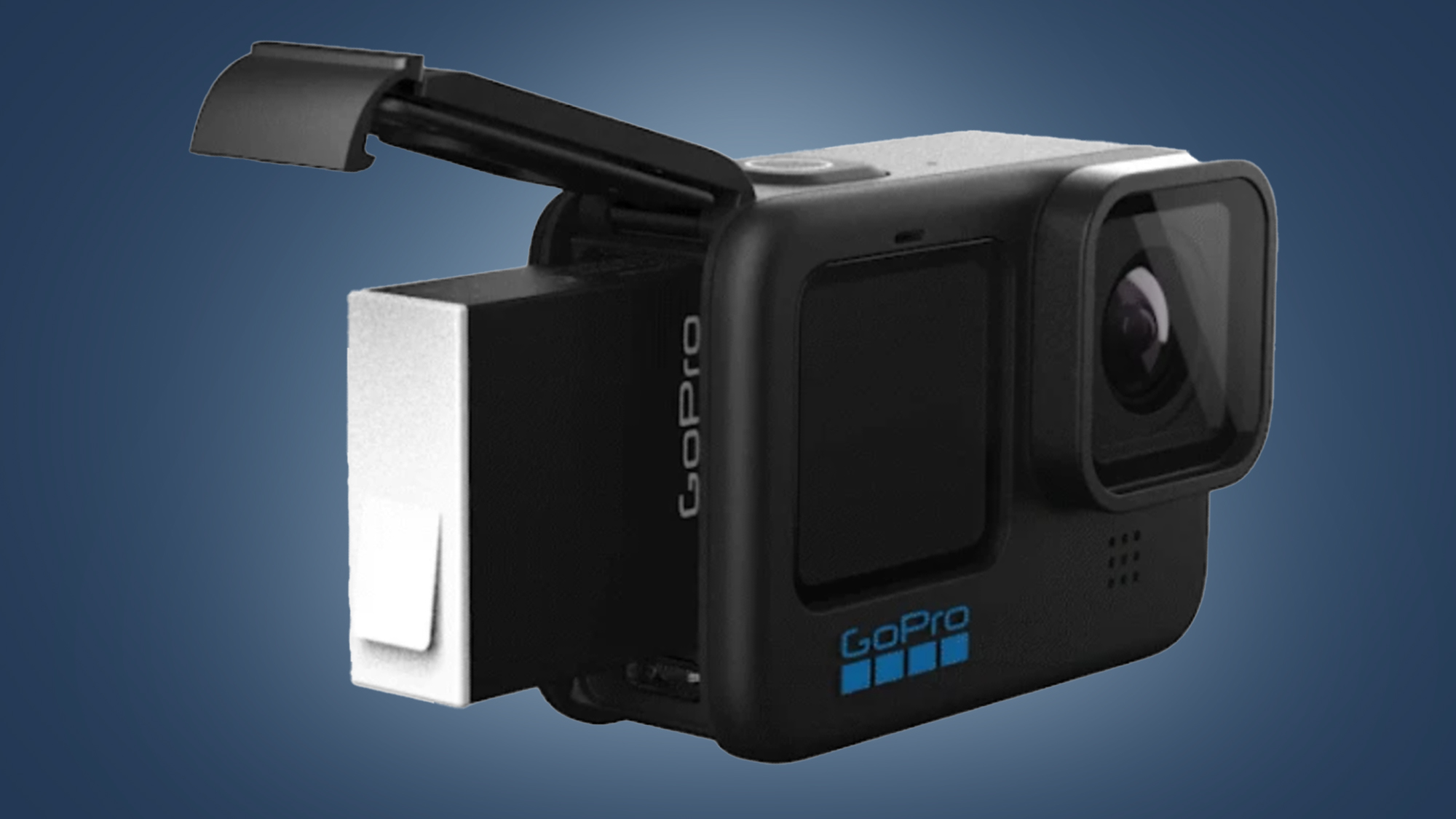
This meatier in-package battery – which extends recording time by up to 38%, depending on the mode you’re shooting in – is available for the Hero 10 Black as an optional extra, but it’s nice to see GoPro including it straight out of the box with its latest action cam.
For a more in-depth look at its strengths compared to GoPro's older battery, you can read our GoPro Enduro review.
9. Choose your difficulty
To help better suit the needs of both casual and hardcore GoPro users, the Hero 11 Black features two different interface settings: ‘Easy’ mode and ‘Pro’ mode.
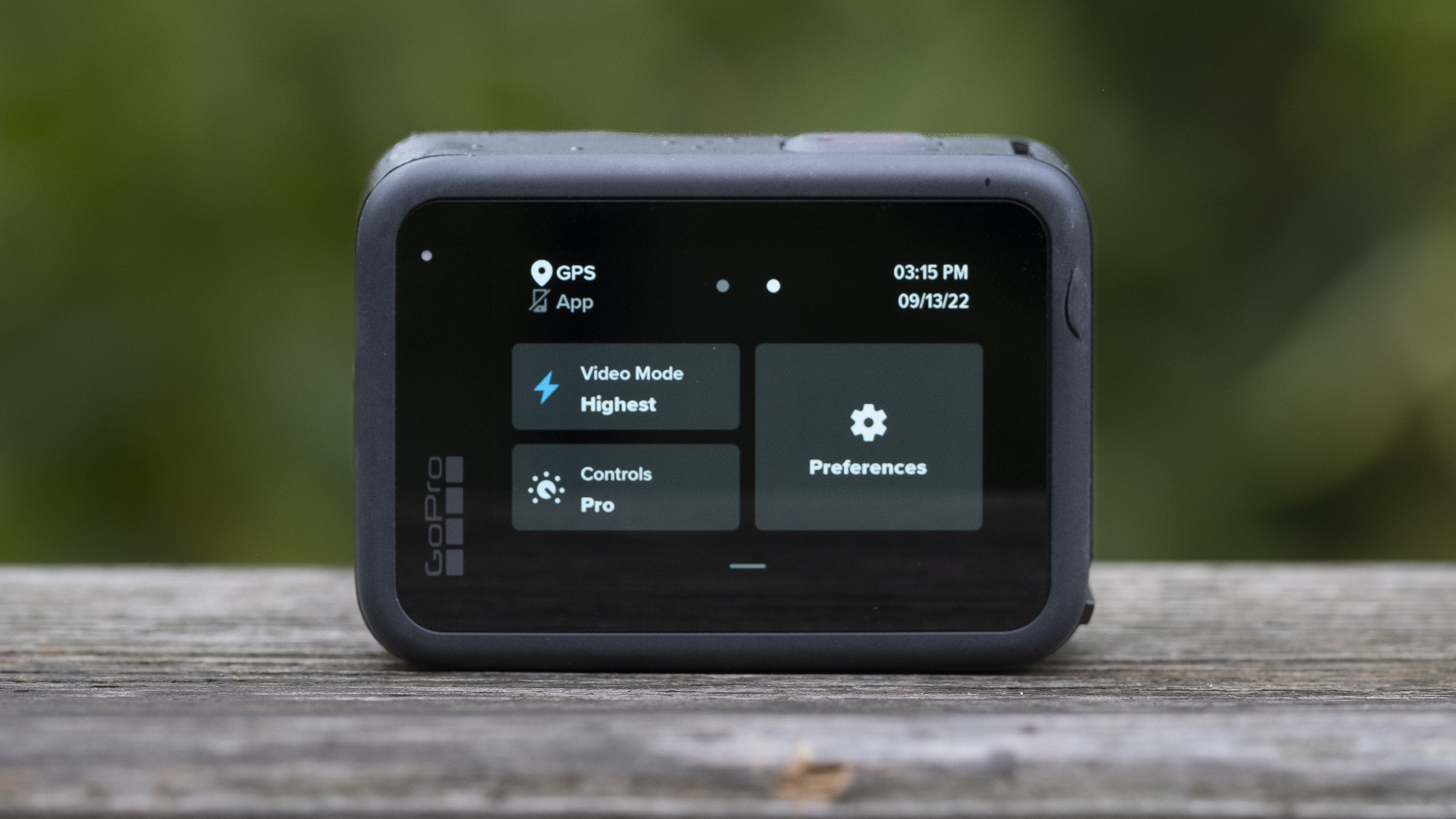
This distinction isn’t available on the Hero 10 Black, and gives seasoned pros the option of controlling all manner of complex presets (bit-rate, color profiles and so on) while keeping more inexperienced users happy with a simpler point-and-shoot experience.
Should you upgrade to the Hero 11 Black?
Without a doubt, the Hero 11 Black is GoPro’s most accomplished action camera to date – but is it worth the upgrade for those already rocking the Hero 10 Black?
Unsurprisingly, the answer to that question will depend on your specific needs. Hardcore content creators will almost certainly benefit from the Hero 11 Black’s improved color grading options and the versatility brought about by its new sensor.
Casual GoPro users, though, may find that its slightly bigger battery, new digital lens and handful of neat timelapse options aren’t significant enough improvements to warrant the additional expense.
For point-and-shoot users, there's no real difference in image quality between the Hero 11 Black and Hero 10 Black. So the question is whether or not you need the versatility of that new sensor for producing videos with different aspect ratios, plus handy extras like Horizon Lock.
These are nice-to-haves rather than essentials, so we think the Hero 10 Black is the better value option for most people. But there's no doubt the Hero 11 Black is GoPro's most versatile action cam so far – and that could be worth paying extra for, particularly if you regularly post to different social media platforms.
Get daily insight, inspiration and deals in your inbox
Sign up for breaking news, reviews, opinion, top tech deals, and more.

Axel is TechRadar's UK-based Phones Editor, reporting on everything from the latest Apple developments to newest AI breakthroughs as part of the site's Mobile Computing vertical. Having previously written for publications including Esquire and FourFourTwo, Axel is well-versed in the applications of technology beyond the desktop, and his coverage extends from general reporting and analysis to in-depth interviews and opinion. Axel studied for a degree in English Literature at the University of Warwick before joining TechRadar in 2020, where he then earned an NCTJ qualification as part of the company’s inaugural digital training scheme.